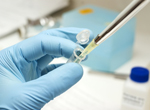It has long been known that our bodies carry around hundreds of substances that we have absorbed one way or another from the air, water, or food. The technology is now available to detect extremely minute quantities of a number of substances—for some, less than a millionth of a gram, which is 30 billionths of an ounce. The Centers for Disease Control and Prevention (CDC) is working to establish a baseline of what average citizens carry around in their bodies, broken down by age, gender, and other factors. This baseline is used to assess the effectiveness of efforts to reduce exposures and to set priorities for research on whether the presence of any of these substances has any effect on health.

CDC has taken urine and blood samples from about 10,000 people and analyzed them for 275 different substances contained in the things we eat, drink, inhale, or touch. Results are available in the Fourth National Report on Human Exposure to Environmental Chemicals (Updated Tables, Volume One and Volume Two, January 2017). Aliphatic diisocyanates are not included in the chemicals listed in the CDC study findings.
CDC carefully pointed out that the mere presence of a chemical does not signify risk to health. Assessing risk does not depend solely on knowing whether a substance is present in a body—it depends on many more factors, such as what the substance is, how much of it is carried in blood and tissues, and how long it stays in the body. Although the new data are helpful to assess risk from environmental substances, biomonitoring data is limited in the information it provides.

For instance, the data does not show from where the exposures came. Biomonitoring data alone is not indicative of adverse health effects. Biomonitoring data alone does not constitute a complete exposure assessment. Studies of absorption, distribution, metabolism, and excretion are needed to convert biomonitoring data into more useful information that in turn must be evaluated with toxicological data before they can be used to predict potential health risks.
The American Chemistry Council provides general information about the role biomonitoring can play in helping protect public health and in making informed policy-decisions.